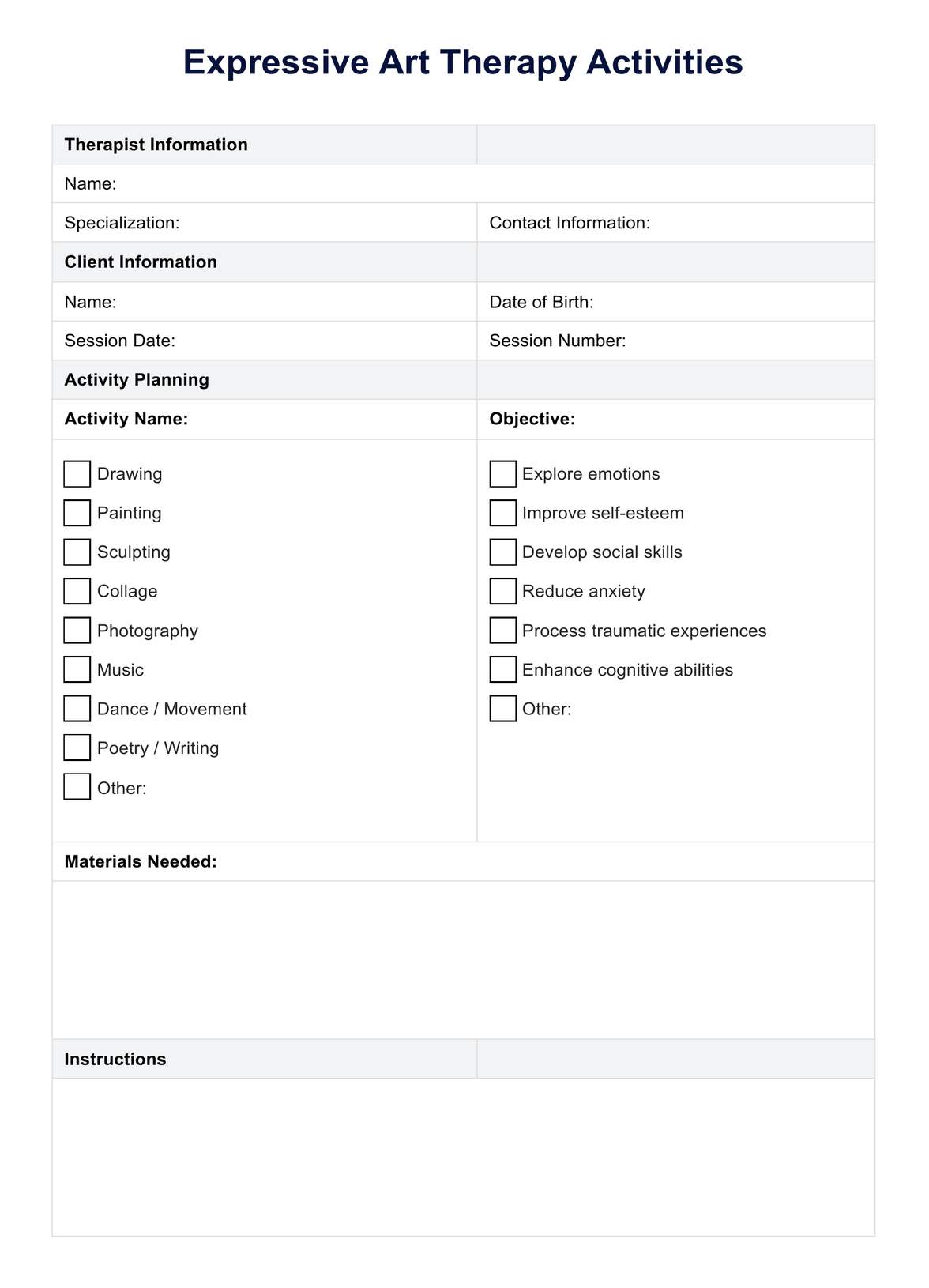Art therapy typically focuses on a single art form as a therapeutic tool, such as painting or drawing, to facilitate personal growth and healing. Expressive arts therapy, however, integrates multiple forms of creative expression, including visual arts, music, dance, and writing, offering a more complete and holistic approach to art therapy techniques.

Expressive Art Therapy Activities PDF
Explore the healing power of art with our Expressive Art Therapy guide and free PDF, aimed to enhance mental well-being through creativity.
Expressive Art Therapy Activities PDF Template
Commonly asked questions
Engage in expressive art therapy by choosing a form of creative expression that resonates with you, such as drawing pictures, music, or dance. Use it to explore your feelings and experiences without judgment. Working under the guidance of a trained expressive arts therapist who can support and structure the process is beneficial.
Expressive art therapy for mental health uses various creative modalities to help individuals explore emotions, reduce stress, and improve symptoms of mental health conditions. It offers a safe, fun, and supportive environment to express thoughts, ideas, and feelings, facilitating personal insight and emotional healing.
EHR and practice management software
Get started for free
*No credit card required
Free
$0/usd
Unlimited clients
Telehealth
1GB of storage
Client portal text
Automated billing and online payments











